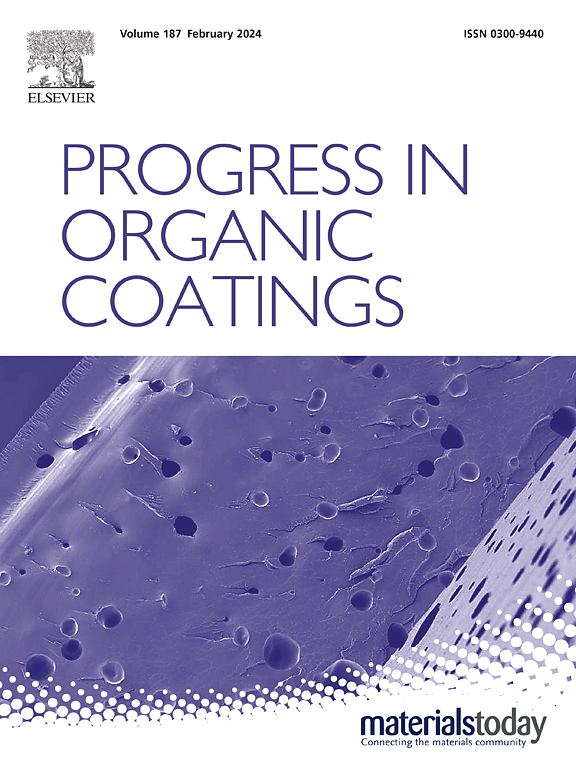Structural design and preparation of LED/moisture dual-cured polyurethane acrylate coatings with comprehensive properties
IF 6.5
2区 材料科学
Q1 CHEMISTRY, APPLIED
引用次数: 0
Abstract
LED curing technology makes up for some drawbacks of UV mercury lamps with its merits of no ozone emission and low energy consumption, and gradually replaces traditional UV mercury lamps in numerous fields. Nevertheless, a solitary LED curing coating struggles to fulfill the requirements in terms of curing depth, curing chroma, and comprehensive performance. Based on these, four types of polyurethane acrylate (PUA) coatings were fabricated through two-step synthesis and LED/moisture dual curing technology using cycloaliphatic isocyanate (IPDI), aliphatic isocyanate (HDI), monofunctional acrylate (HEMA), and trifunctional acrylate (PETA) as the primary raw materials. The dual curing system integrates the advantages of LED curing and moisture curing, and mitigates the shortcomings of incomplete curing and poor comprehensive performance of single LED. The experimental results show that these four dual-curing coatings show a certain degree of optimization in comprehensive properties such as curing properties, thermal properties, mechanical properties, and coating properties. In particular, the dual-curing coating prepared with HDI as the hard segment and PETA as the end-capping agent has a surface drying time of only 5 s. After dual curing, the gel content, water contact angle, tensile strength, shear strength, hardness, and adhesive force of the sample can respectively reach 97.8 %, 112.4°, 17.26 MPa, 3.7 MPa, 58.5 Shore D, and 5 B. Additionally, the coating also exhibited outstanding solvent resistance, with the absorption rates of 0.35 %, 8.42 %, 1.35 %, and 1.16 % respectively after 48 h immersion in water, ethanol, 10 wt% NaOH, and 10 wt% HCl solutions. It is also notable that the curing depth of the dual-cured coating can reach 8.96 mm, which is significantly higher than the 3.76 mm of the single light curing, and the colored curing is complete. Four kinds of coatings can be selected and customized in accordance with diverse application requirements, which is of great significance for the further development of environmental protection coatings and holds substantial practical value in industrial production.

求助全文
约1分钟内获得全文
求助全文
来源期刊

Progress in Organic Coatings
工程技术-材料科学:膜
CiteScore
11.40
自引率
15.20%
发文量
577
审稿时长
48 days
期刊介绍:
The aim of this international journal is to analyse and publicise the progress and current state of knowledge in the field of organic coatings and related materials. The Editors and the Editorial Board members will solicit both review and research papers from academic and industrial scientists who are actively engaged in research and development or, in the case of review papers, have extensive experience in the subject to be reviewed. Unsolicited manuscripts will be accepted if they meet the journal''s requirements. The journal publishes papers dealing with such subjects as:
• Chemical, physical and technological properties of organic coatings and related materials
• Problems and methods of preparation, manufacture and application of these materials
• Performance, testing and analysis.
 求助内容:
求助内容: 应助结果提醒方式:
应助结果提醒方式:


